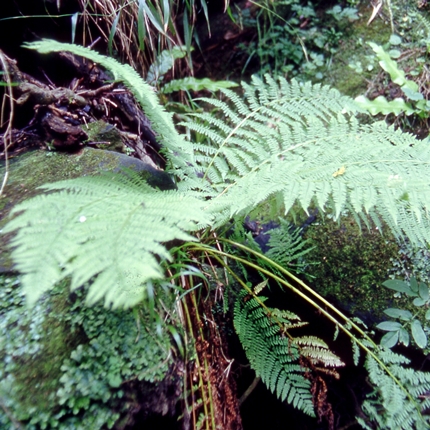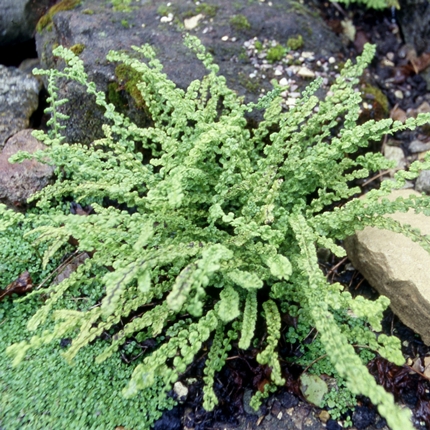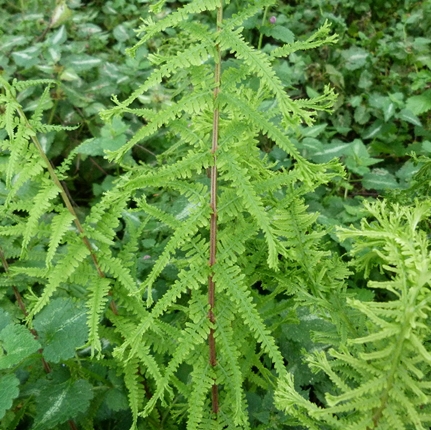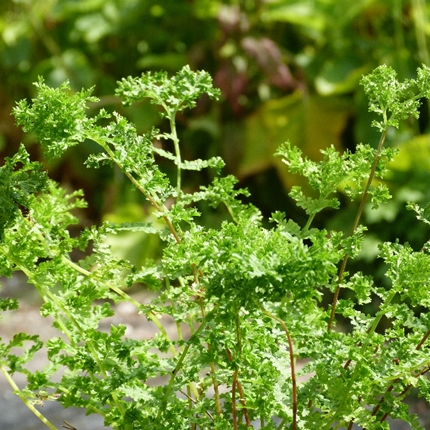A.filix-femina AGM (D) lady fern. Hight/Spread 70cm or more.
A British native fern that likes shade and moist soils though it will tolerate moderately dry borders especially in deep shade, and is very hardy. A visitor from Latvia tells me that it is one of the few ferns that he can grow outside in the northern Baltic region. The bipinnate, occasionally tripinnate, fronds are very like those of the male fern but finer, which is what earns it the fancy name of lady fern, no fern of course having a sex.This species has probably more cultivated forms than any other fern, many more than can be listed here. But look out for, ‘Axminster’, and 'Drueryi' of the Plumosum Group, lovely forms with even finer textured foliage than the species, and 'Axminster' at least is a strong grower. |

|
. ‘Frizelliae’ (the Irish tatting fern) a dwarf form to 40cm, in which the pinnae are all reduced to little bobbles on the sides of the rachis, is especially charming. Some people say they find this form hard to grow, bu since it grows easily for me, I find it hard to say why this should be so, I suspect that good drainage may help. The buyer should also be wary, since 'Frizelliae' does not come true from spores and many plants on sale will often be poor quality and atypical. |

|
The 'Cruciatum' group ‘Victoriae’, with crossed over pinnae which form a lattice effect, is tall and spectacular, but beware, not all plants sold under this name are true to type. Dre's Dagger is a good modern form in the 'Cruciatum' group, (Cruciatum meaning with crossed leaves.) and has narrower more tapering fronds which are quite striking. While if you can still find it A. filix-femina 'Fieldiae' is an excellent old cruciate form with very narrow almost ribbon like fronds. |

|
There are also Grandiceps and Cristatum Groups with crests and frills on the fronds, many are spectacular, nearly all are interesting and worth experimenting with, though too many together can be overwhelming. |

|
|